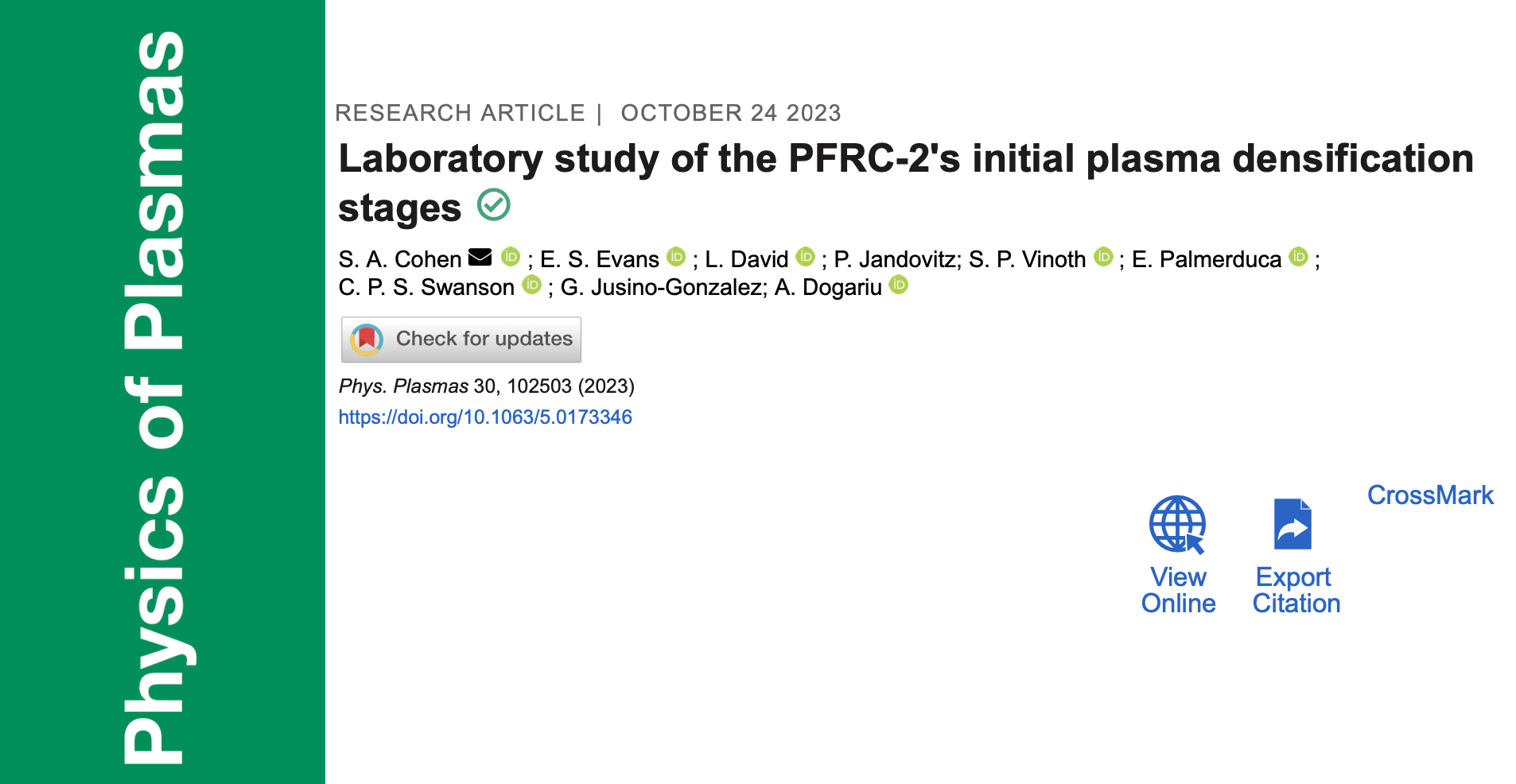Author: Sangeeta Punjabi-Vinoth
-
Young Women’s Conference held at Princeton University
On March 15th, Stephanie Thomas and myself Sangeeta P. Vinoth attended the Young Women’s Conference (YWC) held at Princeton University (PU) that is organized by Princeton Plasma Physics laboratory (PPPL) each year. It was my pleasure to attend the Keynote speaker talk given by Tania Lombrozo who is a Professor of Psychology at Princeton University.…
-
INFUSE Workshop at PPPL
Our team Stephanie Thomas, Vice President of Princeton Satellite Systems (PSS), Christopher Galea, Research Scientist and myself Sangeeta P. Vinoth attended the INFUSE in-person Workshop held on Feb 27th and Feb 28th 2024 at Princeton Plasma Physics Laboratory (PPPL). The INFUSE workshop focused on the opportunities for networking during the poster sessions. During the poster…
-
APS-DPP Conference held in Denver, Colorado (Sangeeta)
It was great to attend the APS-Division of Plasma Physics meeting this year held in Denver, CO. I have an opportunity to present my work with an oral presentation on ” Detection and Analysis of Low Energy X-ray emission from PFRC-2″ and also presented a poster titled ” Laboratory study of the PFRC-2’s initial plasma…
-
Our paper titled “Laboratory study of the PFRC-2’s initial plasma densification stages” is here
The paper titled ” Laboratory study of the PFRC-2’s initial plasma densification stages” published in Physics of Plasmas, Volume 30, October 2023 talks about our research on Initial plasma densification by odd parity rotating magnetic fields (RMFo) applied to the linear magnetized Princeton field-reversed configuration (PFRC-2) device with fill gases at pressures near 1 mTorr…

-
Young Women’s Conference @PPPL
Stephanie and I attended the YWC conducted by PPPL at Princeton University on March 16, 2023. This conference introduces middle-school and high-school-aged girls (in 7th to 10th grades) to women scientists and engineers and the wide breadth of careers available to them in these fields. Prominent women scientists and engineers from around the region spend…
-
New paper published on analyzing and mitigating pulse-pile-up artifacts in PFRC-2 plasma x-ray spectra
A new paper, “Analysis and Mitigation of Pulse-Pile-Up Artifacts in Plasma Pulse-Height X-ray Spectra” by Taosif Ahsan and our team has been published open-access in MDPI Plasma. It describes the implementation of an algorithm, the two-photon trapezoidal uncorrelated-pulse model, to improve analysis of x-ray spectra emitted from PFRC-2 plasma. This model was developed to reduce…
-
Research paper on “A diagnostic to measure neutral-atom density in fusion-research plasmas” has been published in the Review of Scientific Instruments
A research paper on neutral-atom density diagnostics on the PFRC-2, written with our colleagues and collaborators, has been published and is titled “A diagnostic to measure neutral-atom density in fusion-research plasmas” DOI: https://doi.org/10.1063/5.0101683. It is part of the “Proceedings of the 24th Topical Conference on High-Temperature Plasma Diagnostics.” In this paper, a femtosecond two-photon-absorption laser-induced-fluorescence…
-
Collisional Radiative Model paper Published in Review of Scientific Instruments
Our new collisional radiative model paper is titled “Evaluation of a collisional radiative model for electron temperature determination in hydrogen plasma” DOI: https://doi.org/10.1063/5.0101676. It is part of the “Proceedings of the 24th Topical Conference on High-Temperature Plasma Diagnostics.” This paper talks about a collisional-radiative (CR) model that extracts the electron temperature, Te, of hydrogen plasmas from…
-
Plasma oscillations seen in seed and RMF plasma using Phantom Camera
The plasma rotation of the PFRC is being analyzed by the Phantom Camera in the Princeton Plasma Physics laboratory. The above media was taken when we were running with the Rotating Magnetic Field (RMF) Heating System. The video from 10 to 23 seconds shows the plasma rotations are more pronounced and then stabilized later on.…
-
Upgrade underway of Princeton Field Reversed Configuration-2
The Princeton Field Reversed Configuration-2 (PFRC-2) upgrade in field and frequency is underway. We are currently installing new coils around the experiment to increase the magnetic fields and new capacitors to help lower the RF operating frequency – all to reach our target milestones of measuring ion heating! This is an essential next step in…
